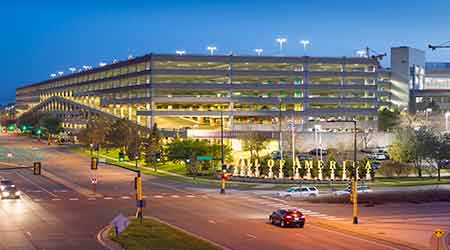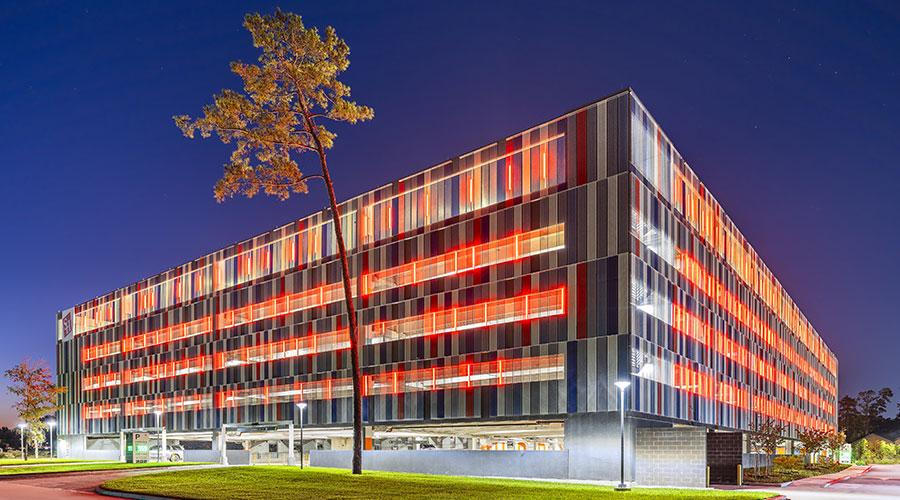Lighting Upgrades Keep Mall of America Fresh, Energy Efficient
Part 1 of a 3-part article on the Mall of America's lighting upgrades
Charlie Brantl talks with many lighting manufacturers in his role at the Mall of America in Bloomington, Minn. Many of the discussions focus on products aimed at reducing energy use at the massive retail facility that contains 4.87 million square feet and attracts 42 million visitors annually.
While saving energy is a top priority for any mall — the Mall of America has reduced its use 16 percent since Brantl started at the facility 17 years ago — keeping customers coming back is higher on the mall’s priority list than it is for most other commercial and institutional facilities. To make sure the mall remains an economic powerhouse — it employs 11,000 people and generates $2 billion in annual revenue — the facility undergoes constant renovations and expansions. These projects frequently target the mall’s lighting systems.
The upgrades are part of a strategy that involves “just a constant updating of products so it doesn’t become old to people, where nothing’s new and it’s all the same and they’ve seen it and they’re done with it,” says Brantl, the mall’s technical service manager for electrical and HVAC systems. “If it’s not as good for the public and guests, it’s not going to impress them.”
Spotlight on upgrades
The mall completed one of its largest lighting projects in 2011, when LEDs replaced high-intensity discharge (HID) fixtures in two parking ramps that contain 12,000 parking spaces. Brandt specified products and swapped out 5,800 fixtures for the upgrade to produce $720,000 in yearly energy savings and cut the ramps’ energy use by two-thirds.
The LEDs’ installation took one year, following four years of preparation that involved Brantl conducting research to find an appropriate mix of lighting products.
“At the time, LED just wasn’t there yet,” Brantl says. “The cost of LEDs was so high. Finally, I just pulled the trigger 4½ years later when I got one company to give us the right price and right product.”
Another significant lighting upgrade involved the incorporation of daylight. In 2014, the mall removed high-wattage fixtures and installed 400 feet of skylights in one of its four main corridors. The skylights are part of the 1.2 miles of clear panels that now cover 70 percent of the facility — a stark contrast to the mall’s darker days when it opened in 1992.
At that time, “they used to have pretty dark colors in the mall,” Brantl says. “Now they’re going to a lot of white colors just to bring everything out. We’ve done a lot of renovations to brighten up the mall.”
The mall’s other lighting upgrades have included replacing 500 50-watt (W) MR16 bulbs and recessed cans in a corridor with 5W LED MR16 halogen bulbs, a move that lowered energy use from 25,000 W to 2,500 W.
When Brantl started working at the mall, it was using incandescent PAR 38 fixtures. Eventually, he replaced them with lamps that reduced wattage per fixture from 150 to 39.
“With the renovations, they put a lot of ceramic metal halide lighting in, which is good lighting,” Brantl says. “The ceramic metal halide has a high color rendering index. But to show more true daylight colors, which they have on the west side, they put a skylight down the entire west side for daylight lighting.”
The mall also found energy savings by upgrading the lighting in mall directory signs, removing 400-500 W tubes that required replacement every year with 150 W lamps that last seven years.
While the many upgrades have been successful in helping the mall hold down lighting-related energy costs, Brantl is still cautious to research the potential benefits of any proposed upgrade.
“There’s more that we can do, but it has to make sense,” Brantl says. “We have to have a three, max four, year return on investment on anything we do and then also make sure the product lasts that long.”
Related Topics:














